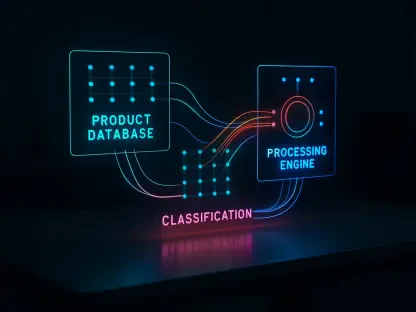The technological evolution over recent years has given rise to innovative interfaces that radically reshape interactions between humans and machines. Among these pioneering advancements is “vibe coding,” a concept that capitalizes on natural language inputs to instruct artificial intelligence technologies to carry out intricate tasks. This approach signifies a transformative shift in software development and beyond by diminishing the traditional requirement for technical expertise. At its heart, vibe coding represents a broader industry trend where natural language processing is becoming the quintessential interface for human-machine exchanges. Its implications span various fields, promising to redefine the user’s technological experience and interaction depth. With the allure of simplicity and democratization, the practice beckons to a future where technology is accessible to all, regardless of technical background.
Vibe Coding: A New Dawn in Software and Application Development
Democratizing Innovation
Vibe coding, initially propelled by tech pioneers like Andrej Karpathy, has swiftly gained momentum, drawing attention for its ability to democratize software development. Notably, individuals without formal technical training, such as Rene Turcios, have tapped into the power of AI tools to create sophisticated applications, all through the straightforward application of vibe coding. By enabling users to bypass intricate coding languages, vibe coding has made software development more approachable and within reach for a broader audience. This shift has implications for the tech industry, as it lowers barriers and accelerates innovation. Non-specialists can now create complex systems through intuitive commands, potentially leading to a burst of creativity and novel approaches in technology fields previously dominated by experts.
Balancing Simplicity and Complexity
While vibe coding’s simplicity is appealing, it is not without its critiques. Describing the interaction process as “vibing” may mislead those unfamiliar with the technology into thinking the complexity of AI tasks is effortlessly manageable. In reality, underlying AI infrastructures supporting these interactions are robust and intricate. The systems capable of translating natural language into executable actions rely on advanced computational power and deep machine learning processes. The innovation lies in making these systems accessible and understandable for everyday users. The balance between user-friendly interfaces and the powerful, sophisticated technology underlying them is crucial. It highlights the transition towards a future where complexity is seamlessly managed, delivering highly efficient and intuitive user experiences without sacrificing the technology’s richness or depth.
Extending Reach Beyond Software: A New Frontier
Transforming Internet Browsing
Vibe coding is not confined to software development; its impact on internet browsing is equally transformative. Companies at the forefront, like The Browser Company and OpenAI, are pioneering vibe browsers that empower users to perform complex browsing actions with simple conversational commands. This innovation envisions a browsing experience where users can summarize articles, manage tabs, and interact with multimedia through straightforward language, thus mimicking the user-friendliness of vibe coding in software. This approach reflects a broader consensus that AI systems, which can intuitively comprehend and respond to user intent, represent the future of digital navigation. As traditional input methods grow outdated, the emphasis is on creating interfaces that enhance productivity and adaptability, allowing users to interact seamlessly with vast digital information landscapes.
Streamlining Daily Automation
Outside of browsing, vibe interfaces are revolutionizing how users automate daily functions and manage settings. Current innovations, like Microsoft’s Copilot+ and Samsung’s SmartThings platform, incorporate natural language interactions to adjust device settings or automate household routines. Users can now express needs in simple phrases, such as “Increase brightness” or command comprehensive routines like “Turn off all the lights when I leave the house.” This trend toward intuitive automation underscores a growing need for technology that operates in harmony with human language, breaking down interaction barriers and broadening user engagement. As these ecosystems continue evolving, they promise to dissolve the complexity of tech interfaces, allowing a seamless incorporation into daily life and promoting an inclusive technological environment.
Revolutionizing Mobility and Communication
Conversational Mobility Solutions
The mobility sector is witnessing an upheaval brought on by vibe coding and its applications. Collaboration among tech giants, such as Perplexity and Deutsche Telekom, is paving the way for AI-powered smartphones. These devices redefine interaction by enabling voice-activated commands to conduct activities traditionally reliant on dedicated apps. The potential for smartphones to evolve into fully conversational assistants symbolizes a reduction in app dependency and places a greater focus on seamless, voice-driven navigation. This interface evolution is pivotal as it aligns with modern user preferences for intuitive, hands-free control. By transforming how individuals interact with mobile devices, vibe-based technology is fostering a future where communication with technology is increasingly fluid and aligned with human conversational norms.
Enhancing Business Communication
In the realm of business, vibe-based interfaces are making waves by enhancing communication efficiency. AI tools are increasingly useful in assisting users in crafting emails and other business correspondences by translating informal language prompts into structured professional messages. This application allows professionals to focus on intent while AI refines and formalizes output. By enabling users to specify needs in everyday language, businesses gain efficiency and productivity in communication tasks. Vibe-based solutions liberate users from rigid structures, promoting more natural engagement within corporate frameworks and contributing to a broader shift toward technology that intuitively aligns with human expression and requirements.
Navigating the Balance Between Perception and Reality
Addressing Misconceptions
Despite vibe coding’s expanding influence, popular perceptions often misconstrue the term “vibing” as overly simplistic. In informal contexts, “vibing” suggests a casual, mood-driven interaction style; however, interacting with AI systems, particularly those as advanced as those enabled by vibe coding, is far from a laid-back affair. The sophistication involved in these interactions is substantial, as they require deep computational abilities and precise AI response systems. Illuminating the nuances behind these advanced interfaces is crucial for understanding that, while they appear intuitive and user-friendly, they are underpinned by significantly complex architectures. Bridging the gap between ease of use and the formidable technological frameworks is essential to fully appreciate the innovation’s depth.
Enabling Widespread Technological Accessibility
The overarching trend, epitomized by vibe coding, is the progression toward intuitive interaction models across diverse technological applications. By establishing natural language as the predominant user interface, AI is broadening accessibility. It enables a greater segment of the population to harness computational power effectively without demanding specialized knowledge. The evolution is comparable to historical technological revolutions – from early computing systems to modern graphical interfaces – marking yet another phase in transforming technology into more inclusive and approachable systems. These advancements echo long-standing human aspirations to make technology fully serve humanity’s needs without the traditional skill barriers, ultimately democratizing its usage and impact across all facets of daily life.
Future Perspectives of AI and Natural Language
In the business world, vibe-based interfaces are gaining traction by improving communication efficiency. AI tools are valuable for helping users create emails and other business correspondences, as they translate casual language prompts into structured, professional messages. This functionality allows professionals to concentrate on their intended message while AI refines and formalizes the output. By enabling users to articulate their needs in everyday language, businesses benefit from improved efficiency and productivity in communication tasks. Vibe-based solutions free users from rigid structures, encouraging more natural interaction within corporate environments. This trend signifies a broader move toward technology that intuitively syncs with human expression and demands. Such interfaces are not just about streamlining communication; they’re pivotal in bridging the gap between human expression and business effectiveness, showcasing how technology can align seamlessly with human needs without compromising the natural flow of interaction.









